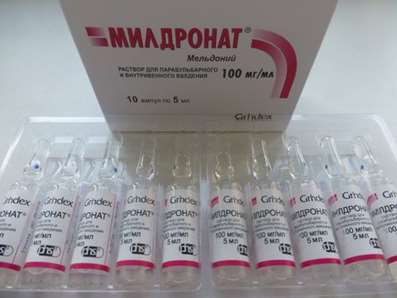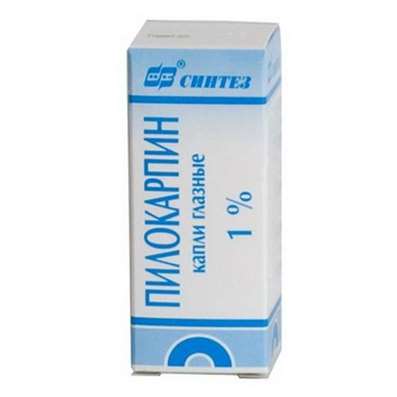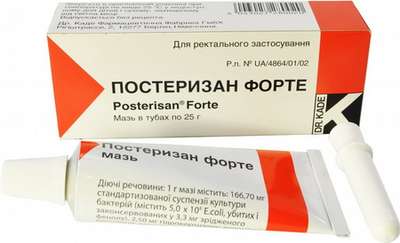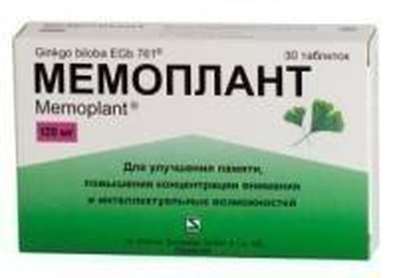Instruction for use: Suprastin
I want this, give me price
Dosage form: Solution forintravenous and intramuscular injection; Tablets
Active substance: Chloropyramine*
ATX
R06AC03 Chloropyramamine
Pharmacological groups:
Antiallergic agent - H1-histamine receptor blocker [H1-antihistamines]
The nosological classification (ICD-10)
H10.1 Acute atopic conjunctivitis: Allergic conjunctivitis; Allergic eye diseases; Allergic conjunctivitis; Allergic conjunctivitis caused by chemical and physical factors; Allergic rhinoconjunctivitis; Allergic inflammation of the eyes; Spring Qatar; Spring keratitis; Spring conjunctivitis; Conjunctivitis allergic; Year-round allergic conjunctivitis; Exacerbation of pollinosis in the form of rhinoconjunctival syndrome; Acute allergic keratoconjunctivitis; Acute allergic conjunctivitis; Superficial bacterial infection of the eyes; Rhinoconjunctivitis; Seasonal allergic conjunctivitis; Seasonal conjunctivitis; SENSORY; Chronic allergic keratoconjunctivitis; Chronic allergic conjunctivitis
J30 Vasomotor and allergic rhinitis: Allergic rhinopathy; Allergic rhinosinusopathy; Allergic diseases of the upper respiratory tract; Allergic rhinitis; Allergic rhinitis seasonal; Vasomotor runny nose; Prolonged allergic rhinitis; All-year-round allergic rhinitis; All-year allergic rhinitis; Year-round or seasonal allergic rhinitis; All-the-year-round rhinitis of an allergic nature; Rhinitis vasomotor allergic; Exacerbation of pollinosis in the form of rhinoconjunctival syndrome; Acute allergic rhinitis; Edema of the nasal mucosa; Edema of the nasal mucosa; Edema of the mucous membrane of the nasal cavity; Swelling of the nasal mucosa; Swelling of the nasal mucosa; Pollinosis; Permanent allergic rhinitis; Rhinoconjunctivitis; Rhinosinusitis; Rhinosinusopathy; Seasonal allergic rhinitis; Seasonal allergic rhinitis; Hay rhinitis; Chronic allergic rhinitis; Allergic diseases of the respiratory tract
J30.1 Allergic rhinitis caused by pollen of plants: Hay fever; Hay fungus; hay fever; Hypersensitivity to pollen of plants; Polyposis allergic rhinosinusitis; Seasonal pollinosis; Seasonal rhinitis
J30.2 Other seasonal allergic rhinitis: Allergic rhinitis seasonal; Seasonal rhinitis of an allergic nature
L20 Atopic dermatitis: Allergic diseases of the skin; Allergic skin disease noninfectious etiology; Allergic skin disease etiology nemikrobnoy; Allergic skin diseases; Allergic skin lesions; Allergic reactions on the skin; atopic dermatitis; Allergic dermatosis; Allergic diathesis; Allergic itching dermatosis; Allergic skin disease; Allergic skin irritation; allergic Dermatitis; atopic Dermatitis; allergic dermatoses; exudative diathesis; Itchy atopic eczema Itchy allergic dermatosis; Allergic skin disease; Cutaneous allergic reaction to drugs and chemicals; Cutaneous reactions to medications; Skin and allergic disease; Acute eczema; common neurodermatitis; Chronic atopic dermatitis; Exudative diathesis
L23 Allergic contact dermatitis: Allergic dermatitis;Purulent allergic dermatopathies; Contact allergic reaction; Contact allergic dermatitis; Contact allergic dermatitis; Photoallergic contact dermatitis
L29 Itching: Itching with partial obstruction of the biliary tract; Dermatitis itchy; Dermatosis with persistent itching; Other itching dermatoses; Itching dermatoses; Itching allergic dermatosis; Itching dermatitis; Itching dermatosis; Itching itch; Excruciating itching; Severe itching; Endogenous itching; Skin itching with dermatosis; Restricted itchy dermatitis; Itching of the skin; Itchy scalp; Itching eczema
L30.9 Unspecified Dermatitis: Allergic dermatoses complicated by a secondary bacterial infection; Anal eczema; Bacterial maturation; Varicose Eczema; Venous dermatitis; Inflammation of the skin; Inflammation of the skin upon contact with plants; Inflammatory Skin Disease; Inflammatory Skin Diseases; Inflammatory Skin Diseases; Inflammatory skin reactions; Inflammatory processes of the skin; Hypostatic dermatitis; Fungal Eczema; Fungal dermatosis; Dermatitis; Dermatitis is stagnant; Dermatitis and eczema in the anal area; Dermatitis acute contact; Perianal dermatitis; Dermatosis; Dermatosis of the scalp; Dermatosis of psoriasis; Dermatosis with persistent itching; Dermatoses; Dermatoses itchy; Other itching dermatoses; Significant eczematous manifestations; Itching with dermatoses; Itching eczema; Itching dermatoses; Itching dermatitis; Itching dermatosis; True eczema; Skin reaction to insect bites; Skin itching with dermatosis; Constitutional eczema; Weeping eczema; Drowsing inflammatory skin disease; Dying Infectious-Inflammatory Skin Disease; Non-allergic dermatitis; Nummular eczema; Acute contact eczema; Acute inflammatory skin disease; Acute dermatosis; Acute severe dermatosis; Perianal dermatitis; Superficial dermatosis; Subacute Contact Eczema; Simple dermatitis; Occupational dermatitis; Psychogenic dermatosis; Bubble dermatitis of newborns; Pustular eruptions; Irritation and redness of the skin; Low-flammable eczema; Dry atrophic eczema; Dry eczema; Toxic dermatitis; Ear eczema like dermatitis; Chronic eczema; Chronic dermatosis; Chronic dermatosis; Chronic common dermatosis; Scaly papular dermatosis; Eczema; Eczema anal region; Eczema of the hands; Eczema Contact; Eczema lichenized; Eczema Nummular; Eczema acute; Eczema acute contact; Eczema subacute; Eczematous dermatitis; Eczema-like rashes; Ecome exogenous; Endogenous eczema; Gluteal dermatitis; Limited itching dermatitis
L50 Urticaria: Idiopathic chronic urticarial; Injury Urticaria; Chronic urticarial; Hives of the newborn
T78.1 Other manifestations of a pathological reaction to food: Allergic reactions to food; Allergy to cow's milk proteins; Allergy to proteins of mother's milk; Allergy food; Artificial feeding of children from birth with intolerance to cow's milk proteins; Multiple food allergies; Disturbance of assimilation of milk food; Disturbance of food assimilation; Intolerance to cow's milk protein in infants; Intolerance to cow's milk proteins; Intolerance to cow's milk; Intolerance to certain foods; Food allergy; Food and drug allergy; Food intolerance; Bowel irritation from food
T78.3 Angioedema: Edema Quincke; Laryngeal exacerbation with angioneurotic edema; Recurrent angioedema; Allergic edema; Recurrent swelling of Quincy
T80.6 Other serum reactions: Serum disease; Allergic reaction like serum sickness; Serous disease accelerated
T78.4 Unspecified Allergy: Allergic reactions to insulin; Allergic reactions to insect stings; Allergic reactions similar to systemic lupus erythematosus; Allergic diseases; Allergic diseases of mucous membranes; Allergic diseases and conditions resulting from increased release of histamine; Allergic diseases of mucous membranes; Allergic symptoms; Allergic symptoms in the mucous membranes; Allergic reactions; Allergic reactions caused by insect bites; Allergic reactions; Allergic conditions; Allergic laryngeal edema; allergopathy; allergic conditions; Allergy; House dust allergy; Anaphylaxis; Cutaneous reactions to medications; Skin reaction to insect stings; Cosmetic allergy; Drug allergy; Acute allergic reaction; Laryngeal edema allergic genesis and background radiation; Food and drug allergy
W57 Bite or sting with a non-toxic insect and other non-venous arthropods: An allergic reaction to insect bites; Skin reaction after insect bite; Reactions to insect bites; Mosquito bite; Bite of bloodsucking insects; A bite of an insect; The bite of the wasp
Composition
Tablets - 1 table.
active substance: Chloropyramine hydrochloride 25 mg
Auxiliary substances: stearic acid - 3 mg; Gelatin - 4 mg; Sodium carboxymethyl starch (type A) - 6 mg; Talc - 6 mg; Potato starch - 40 mg; Lactose monohydrate 116 mg
Solution for intravenous and intramuscular injection 1 ml
active substance: Chloro-pyramine hydrochloride 20 mg
Excipients: water for injection - up to 1 ml
Description of dosage form
Tablets: white or grayish white in the form of a disc, with a facet, with engraving "SUPRASTIN" on one side and risky - on the other, without or almost no smell.
Solution: clear, colorless aqueous, with a weak characteristic odor.
Pharmachologic effect
Mode of action - anti-allergic, antihistamine.
Pharmacodynamics
Chloropyramine - a chlorinated analogue of tripelenamine (pyribenzamine) is a classic antihistamine drug belonging to the group of ethylenediaminic antihistamines.
The H1-histamine receptor blocker has antihistamine and m-cholinoblocking action, has antiemetic effect, moderate spasmolytic and peripheral cholinoblocking activity.
Pharmacokinetics
When taken orally, it is almost completely absorbed from the digestive tract. The therapeutic effect of chloropyramine develops within 15-30 minutes after ingestion, reaches a maximum within the first hour after administration and lasts a minimum of 3-6 hours. It is well distributed in the body, including the CNS. Intensively metabolized in the liver. It is excreted mainly by the kidneys. In children, excretion occurs faster than in adult patients.
Indication of the drug Suprastin
hives;
Serum sickness;
Seasonal and year-round allergic rhinitis;
conjunctivitis;
Contact dermatitis;
Itching;
Acute and chronic eczema;
atopic dermatitis;
Food and drug allergy;
Allergic reactions to insect bites;
Angioedema (angioedema) - as an auxiliary.
Contraindications
Hypersensitivity to the components of the drug;
Acute attack of bronchial asthma;
Children under 3 years of age (for this dosage form);
Deficiency of lactase, lactose intolerance, glucose / galactose malabsorption (since the tablet contains 116 mg of lactose monohydrate);
pregnancy;
Lactation period.
With caution: angle-closure glaucoma; Retention of urine; Hyperplasia of the prostate; Impaired liver and / or kidney function; cardiovascular diseases; Elderly patients.
Application in pregnancy and breastfeeding
There were no adequate, with proper control, studies of the use of antihistamines in pregnant women. In accordance with this, taking SuprastinŽ during pregnancy (especially in the first trimester and the last month) should only be if the potential benefit to the mother exceeds the possible risk to the fetus.
If it is necessary to use the drug during lactation, the question of stopping breastfeeding should be resolved.
Side effects
Side effects, as a rule, occur extremely rarely, are temporary, pass after the drug is discontinued.
From the blood and lymphatic system: very rarely - leukopenia, agranulocytosis, hemolytic anemia and other changes in the cellular composition of the blood.
From the side of the central nervous system: drowsiness, fatigue, dizziness, nervous excitement, tremor, headache, euphoria, convulsions, encephalopathy.
From the side of the organ of vision: blurred vision, glaucoma, increased intraocular pressure.
From the CVS: lowering blood pressure, tachycardia, arrhythmia. It was not always possible to establish a direct relationship between these side effects and drug intake.
From the gastrointestinal tract: discomfort in the abdomen, dry mouth, nausea, vomiting, diarrhea, constipation, loss or increase in appetite, pain in the upper abdomen.
From the side of the musculoskeletal and connective tissue: muscle weakness.
From the side of the kidneys and urinary tract: difficulty urinating, retention of urine.
Other: photosensitization, allergic reactions.
If any of the above effects occur, you should stop taking the drug and immediately consult a doctor.
Interaction
The drug enhances the effect of drugs: barbiturates, m-holinoblokatorov, opioid analgesics.
MAO inhibitors can enhance and prolong the anticholinergic action of chloropyramine.
When combined with ototoxic drugs, SuprastinŽ can mask the early signs of ototoxicity.
Antihistamines can distort the results of cutaneous allergological tests, therefore, several days before the scheduled test, medication of this type should be discontinued.
Dosing and Administration
Tablets
Inside, with food, without chewing and washing down with enough water.
Adults: appoint 1 table. 3-4 times a day (75-100 mg / day).
Children: at the age of 3 to 6 years - 1/2 table. 2 times a day; From 6 to 14 years - on 1/2 table. (12.5 mg) 2-3 times a day.
The dose can be gradually increased in the absence of side effects in the patient, but the maximum dose should never exceed 2 mg / kg.
The duration of the course of treatment depends on the symptoms of the disease, its duration and course.
Special patient groups
Elderly, emaciated patients. The use of SuprastinŽ requires extreme caution. In these patients, antihistamines often cause side effects (dizziness, drowsiness).
Patients with impaired hepatic function. It may be necessary to reduce the dose due to a decrease in the metabolism of the active component of the drug in liver diseases.
Patients with impaired renal function. It may be necessary to change the regimen of the drug and reduce the dose due to the fact that the active component is mainly released through the kidneys.
Injection:
IM, IV (applies only in acute severe cases under the supervision of a doctor!)
Adults: the recommended daily dose is 1-2 ml (1-2 amp.) IM.
Children: Recommended initial doses - at the age from 1 to 12 months - 0.25 ml (1/4 amp.) W / m; From 1 to 6 years - 0,5 ml (1/2 amp.) W / m; From 6 to 14 years - 0,5-1 ml (1 / 2-1 amp.) W / m.
The dose can be carefully increased depending on the patient's response and the observed side effects. However, the dose should never exceed 2 mg / kg. In severe allergy, treatment should be started with a cautious slow intravenous injection, then continue IM injection or taking the drug inside.
Special patient groups (general recommendations for both forms)
Elderly, emaciated patients: use of SuprastinŽ requires extreme caution. In these patients, antihistamines often cause side effects (dizziness, drowsiness).
Patients with impaired liver function: a dose reduction may be required due to a decrease in the metabolism of the active component of the drug in liver diseases.
Patients with impaired renal function: it may be necessary to change the regimen of the drug and reduce the dose due to the fact that the active component is mainly released through the kidneys.
Overdose
Symptoms: hallucinations, anxiety, ataxia, impaired coordination of movements, athetosis, convulsions. In young children - excitement, anxiety, dry mouth, fixed dilated pupils, red face, sinus tachycardia, urinary retention, fever, coma.
In adults, fever and reddening of the face are observed intermittently, after a period of excitement followed by convulsions and post-convulsive depression, coma.
Treatment: in the period up to 12 hours after taking the drug inside it is necessary to wash the stomach (it should be borne in mind that the anticholinergic effect of the drug prevents the emptying of the stomach). The use of activated carbon is also shown.
It is necessary to monitor the parameters of blood pressure and respiration. Symptomatic therapy, resuscitation. The specific antidote is unknown.
Special instructions
When combined with ototoxic drugs, SuprastinŽ can mask the early signs of ototoxicity.
Diseases of the liver and kidneys may require a change (decrease) in the dose of the drug, in connection with which the patient should inform the doctor about the presence of a liver or kidney disease. Taking the drug at night can increase the symptoms of reflux esophagitis.
SuprastinŽ can enhance the effect of alcohol on the central nervous system, and therefore, when taking SuprastinŽ, you should avoid drinking alcoholic beverages.
Long-term use of antihistamines may lead to violations from the blood system and hematopoiesis (leukopenia, agranulocytosis, thrombocytopenia, hemolytic anemia). If, during prolonged use, there is an unexplained increase in body temperature, laryngitis, pale skin, jaundice, the formation of ulcers in the mouth, the appearance of hematomas, unusual and prolonged bleeding, it is necessary to conduct a clinical blood test with the definition of the number of uniform elements. If the results of the analysis indicate a change in the blood formula, the drug is stopped.
Influence of medicinal product for medical use on the ability to control vehicles, mechanisms. The drug, especially in the initial period of treatment, can cause drowsiness, fatigue and dizziness. Therefore, in the initial period, the duration of which is determined individually, it is prohibited to drive vehicles or perform work associated with an increased risk of accidents. After this, the degree of restriction on driving and the work with the mechanisms of the doctor should be determined for each patient individually.
Release form
Tablets, 25 mg. For 20 tablets. In a bottle of brown glass with a PE-lid. 1 fl. In a cardboard box. For 10 or 20 tablets. In the blister; 2 blisters (10 pcs.) Or 1 blister (20 pcs.) In a cardboard bundle.
Solution for intravenous and intramuscular injection, 20 mg / ml. Ampoules with a volume of 1 ml with a dark red code ring, 5 amp. In a planar cell packing, 1 or 2 contour cells in a cardboard bundle.
Manufacturer
CJSC "Pharmaceutical Plant EGIS". 1106, Budapest, st. Keresturi, 30-38, Hungary.
Conditions of leave from pharmacies
Tablets - without a prescription.
Solution for injection - according to the prescription.
Storage conditions of the drug Suprastin
At a temperature of 15-25 ° C.
Keep out of the reach of children.
Shelf life of the drug Suprastin
5 years.
Do not use after the expiry date printed on the package.

 Cart
Cart





